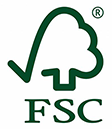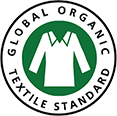Glossary
Air pollutants can be two to five times higher indoors than outdoors. Proper ventilation helps, but it’s best to keep harmful chemicals out of our homes in the first place. Below are some chemicals and certifications to look out for when choosing building materials and furnishings.
Chemicals of Concern
Lead
A potent neurotoxin, lead was widely used in household paint until the 1970s, and in water pipes and plumbing materials before restrictions went into effect in the 1980s. Lead exposure during childhood is especially damaging, and can cause learning and memory impairment and behavior problems. At higher doses, lead is also toxic to an adult’s nervous system, heart and kidneys.
If you live in a home built before 1978, you should find out if there is lead in your paint and take precautions when remodeling. Testing your drinking water is also recommended if you suspect lead in your pipes or if problems have been reported in your area.
For more on lead, see the sections on Water Filters, Paint and Plumbing & Pipes.
Asbestos
Although we've known for decades that airborne asbestos cause cancer and lung disease, asbestos is still not banned in the U.S. It’s been phased out of many building materials and products, but insulation, ceiling tiles, vinyl flooring, wall plaster and textured paints that predate the 1980s can all contain asbestos. If you suspect asbestos is anywhere in your home, you should have a certified professional inspect it before you begin any remodeling projects.
More information on asbestos is included in the sections on Insulation, Flooring and Ceiling Tiles.
Flame retardants
Flame retardant chemicals are added to foams and fabrics in home furnishings, and are also used in electronics. In the past decade, research has shown that flame retardants called PBDEs can harm the nervous system and fetal development, and are associated with endocrine disruption, immunotoxicity and cancer. PBDEs from home products settle in household dust, posing a particular hazard to children. Although manufacturers started to phase out PBDEs in 2006, the replacement chemicals have similarly troubling health effects. Check with retailers and manufacturers about the use of flame retardant chemicals before purchasing any furniture, mattresses or curtains, as well as any children’s products that contain foam.
For more on flame retardants, see the sections on Reducing Household Dust, Mattresses, Upholstered Furniture and Insulation.
VOCs
Volatile organic compounds are emitted from composite wood, glues, sealers, paints, stains, finishes, carpets and gas stoves. Cleaners and air fresheners also release VOCs. VOCs can irritate your eyes and nose, or trigger asthma attacks. One of the most harmful and common VOCs is formaldehyde, known to cause cancer. You can reduce VOCs through proper ventilation and by choosing low-emission products without formaldehyde or other harmful VOCs.
VOCs are further discussed in the sections on Cleaners & Air Fresheners, Paint, Mattresses, Caulk, Sealants & Adhesives, Wood Stains & Finishes, Kitchen Cabinets & Countertops, Carpet and Flooring.
PVC
Polyvinyl chloride is a plastic—marked with the recycling code 3—used in rigid plastic products like windows, pipes and flooring. Flexible PVC is used for some shower curtains. PVC is considered by some experts to be the most toxic form of plastic because it is made from vinyl chloride, a carcinogen. Soft or flexible PVC can contain phthalates, some of which are reproductive toxicants. If PVC plastic is burned, it forms highly toxic chemicals known as dioxins, which pollute the environment and accumulate in wildlife, fish and livestock.
For more on PVC, see the sections on Energy Efficiency, Carpet, Flooring, Ceiling Tiles and Plumbing & Pipes.
PFCs
Perfluorinated chemicals are used in carpets, stain treatments, floor wax, waterproof clothing and nonstick cookware. They accumulate in the human body and are associated with cancer, hormone disruption, weakened immune systems, pregnancy complications and low birth-weight babies. Some PFCs have been phased out, but limited research shows their replacements may be no better.
More information on PFCs is available in the sections on Cleaners & Air Fresheners, Water Filters, Carpet and Flooring.
Antimicrobial agents
Treatments that supposedly kill bacteria are commonly added to carpets, countertops, paints, engineered wood and ceiling tiles. But studies show they may not actually add any protection. Triclosan, a widely used antimicrobial chemical, has been linked to endocrine disruption and other health concerns. The Food and Drug Administration says there is no evidence that antimicrobials added to soap are any better than plain soap and water. Many of these chemicals are highly toxic to aquatic organisms, and their heavy use may be contributing to the evolution of antibiotic-resistant bacteria.
For more information, see the sections on Cleaners & Air Fresheners, Ceiling Tiles and Carpet.
Asthma triggers
Substances that cause asthma or make it worse are known as asthmagens. Many of these substances are used in building products and cleaners. Formaldehyde, found in glues, composite wood products and emitted from some cleaners; acrylate polymers, found in paints and finishes; ammonia and quaternary compounds, commonly found in cleaning products; and phthalates, found in PVC plastics, have all been linked to asthma.
More information on asthmagens is available in the sections on Cleaners & Air Fresheners, Paint, Insulation, Kitchen Cabinets & Countertops and Flooring.
Radon
Radon is an odorless, tasteless gas that can seep into your home and build up in the air. It occurs naturally in the soil, and some regions in the U.S. are more susceptible to elevated levels of the gas than others. Radon is known to cause lung cancer. The only way to know if your home has radon is to test for it. Fortunately, easy-changes and easy-to-use radon testing kits are sold in home improvement stores.
For more on radon, see the section on Ventilation Systems.
Valuable Certifications and Labels
Not all labels claiming a product is eco-friendly, nontoxic or all natural are necessarily true or meaningful. Be wary of broad statements and far-reaching claims on product labels. It’s best to read ingredients, check material safety data sheets, and look for third-party certifications. Some certifications that do provide valid assurances include:
Forest Stewardship Council (FSC)

FSC certification ensures that products come from wood that was harvested in responsibly managed forests. This label is the most rigorous forest certification system that aims to reduce environmental impacts and promotes sustainable forests.
Global Organic Textile Standard (GOTS)

GOTS certification is the internationally recognized Global Organic Textile Standard. Textiles must contain a minimum of 70 percent organic fibers to be certified, and must also comply with other criteria such as low toxicity of dyes and an extensive list of prohibited substances.
Oeko-Tex Standard 100

Oeko-Tex Standard 100 is an independent certification that tests for harmful substances in various materials and products like fabrics, knits and mattress covers. However, Oeko-Tex certified products may still contain certain flame retardants. If in doubt, contact the manufacturer of the product to ask about their use of flame retardant chemicals.
Greenguard

Greenguard certification is a third-party certification program by Underwriters Laboratory that identifies products with low chemical emissions. Look for Greenguard Gold certification (formerly Greenguard Children and Schools) for products and materials with low-VOC emission levels. However, note that this certification is specific to VOCs and does not limit other hazardous substances, such as phthalates.
Proposition 65 warning
Products sold in California that contain chemicals known to cause cancer, birth defects or reproductive harm must carry a warning label. Because California’s market is so large, many manufacturers put this label on all products with these chemicals, even if they are sold in other states.
TB117-2013
Furniture made in California is now labeled to comply with new fire safety standards, which can be met without chemical flame retardants. Note that TB117-2013 does not ensure the absence of these flame retardants, so always double-check with the manufacturer. If you’re buying older inventory or second-hand furniture, it may have an older TB-117 label and likely contains flame retardant chemicals. Check with the manufacturer if you are unsure.
SB 1019
Although TB 117-2013 was updated to allow products to meet fire safety requirements without the use of flame retardants, it does not prohibit them. An additional label was required under SB 1019 in California to explicitly mark if a product contains or does not contain added flame retardant chemicals.
California Phase 2 compliant
Composite wood products sold in California must meet the California Air Resources Board’s emission standards for formaldehyde and be labeled as California Phase 2 compliant. Products that emit even less formaldehyde than the Phase 2 levels are labeled as “ultra-low emitting formaldehyde,” or ULEF; or as “no-added formaldehyde,” or NAF.



